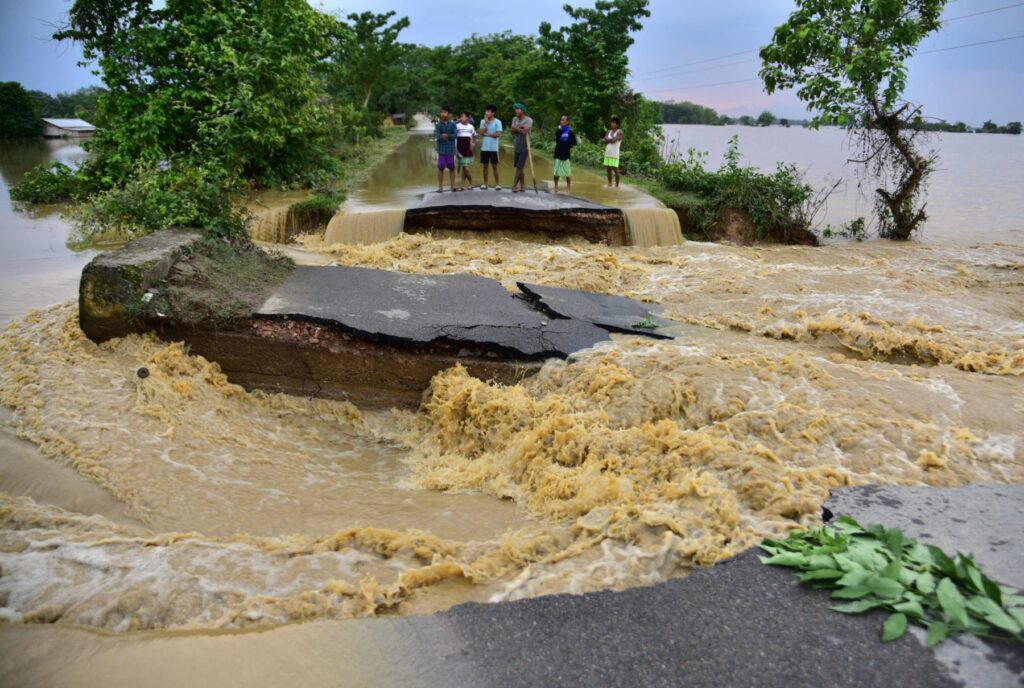Rising Water Spread, Coastal Erosion, Warns CSE’s India Report
Jun 6, 2022 | Pratirodh Bureau
People stand on a road damaged by floodwaters after heavy rains in Assam's Nagaon district on 19 May 2022 (Image: Anuwar Hazarika/Alamy)
Twenty-five glacial lakes and water bodies in India, China and Nepal have recorded over 40 per cent rise in their water spread areas since 2009, posing a grave threat to five Indian states and two Union territories, a new report stated.
According to the report by the Centre for Science and Environment (CSE), the seven states and Union Territories which are under threat are Assam, Arunachal Pradesh, Sikkim, Bihar, Himachal Pradesh, Jammu and Kashmir, and Ladakh.
However, it is not just the rise in water spread that is concerning. The data published in the report ‘State of India’s Environment 2022: In Figures’ tell a worrying tale. It said that over a third of India’s coastline witnessed some degree of erosion between 1990 and 2018. West Bengal is the worst hit with over 60 per cent of its shoreline under erosion.
An increase in the frequency of cyclones and rise in the sea level, and anthropogenic activities such as the construction of harbours, beach mining and building of dams are some of the reasons for coastal erosion, it said.
Citing government data, the report said three out of every four river-monitoring stations in India have recorded alarming levels of heavy toxic metals — lead, iron, nickel, cadmium, arsenic, chromium and copper.
In one-fourth of the monitoring stations, spread across 117 rivers and tributaries, high levels of two or more toxic metals have been reported.
Of the 33 monitoring stations in the Ganga river, contaminant levels in 10 are high.
The report said 45 to 64 per cent of India’s forest cover is likely to become climate hotspots by 2030. By 2050, almost the entire forest cover of the country is likely to become a climate hotspot.
“The severity, in terms of damage due to climate change, is set to increase in 2085,” the CSE report stated.
A climate hotspot refers to an area that is likely to face severe impacts of climate change.
The report revealed that India recycled 12 per cent and burnt 20 per cent of the 3.5 million tonnes of plastic waste it generated in 2019-20.
There is no information on the remaining 68 per cent of plastic waste, which most likely would have ended up in dumpsites and landfills, it stated.
